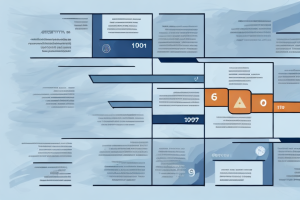Retirement planning is a critical aspect of financial management that requires careful consideration to ensure a comfortable lifestyle during our golden years. One of the primary concerns for many individuals is determining how much money they need to retire with a $100,000 annual income. This article aims to provide a comprehensive guide to understanding the various factors involved and strategies for achieving this goal.
Understanding the 4% rule: Calculating your retirement nest egg
An important concept to grasp when planning for retirement is the 4% rule, which offers guidance on determining the size of your retirement nest egg. This rule suggests that you can withdraw 4% of your initial retirement savings each year while adjusting for inflation to provide a sustainable income throughout your retirement years. To retire with a $100,000 annual income, you can use this rule as a starting point for calculating the total amount needed.
To apply the 4% rule effectively, you’ll need to estimate your expected expenses in retirement, considering various factors such as housing, healthcare, travel, and hobbies. By understanding your anticipated annual expenses, you can calculate the total amount required to generate a $100,000 income, taking into account the rule’s withdrawal rate.
Determining your desired annual income in retirement
Before figuring out how much money you need to retire with a $100,000 annual income, it’s essential to determine the desired level of income that will sustain your lifestyle throughout retirement. Consider the activities, hobbies, and lifestyle choices you wish to maintain, as well as any additional expenses that may arise during this stage of life.
Creating a comprehensive plan that accounts for inflation, changing healthcare costs, and other unforeseen expenses will provide a more accurate estimate of your retirement income needs. It may be helpful to consult with a financial advisor to ensure all aspects have been considered and that your retirement plan aligns with your goals.
Factoring in inflation: Adjusting for the rising cost of living
One crucial factor to consider when determining how much money you need to retire with a $100,000 annual income is inflation. Over time, the cost of goods and services typically increases, eroding the purchasing power of your savings. Therefore, it is essential to factor in inflation when planning for retirement.
To account for inflation, you can use an inflation rate of, on average, 2-3% per year. This means that the amount required to sustain a $100,000 annual income will increase in subsequent years. By considering the impact of inflation on your retirement income, you can adjust your savings and investment goals accordingly.
Examining your current expenses: Estimating your retirement budget
To determine how much money you need to retire with a $100,000 annual income, it is crucial to evaluate your current expenses and estimate your retirement budget. Reviewing your current spending habits and identifying any areas of potential savings can help free up funds to contribute towards your retirement savings.
Consider tracking your expenses for a few months to get a clearer picture of where your money goes. This exercise will enable you to identify discretionary spending that could be redirected towards retirement savings. By adjusting your budget to align with your retirement goals, you can better estimate the amount needed to retire with a $100,000 income annually.
Assessing your sources of retirement income: Social Security, pensions, etc.
When contemplating how much money you need to retire with a $100,000 annual income, it is essential to consider all potential sources of retirement income. Alongside personal savings and investments, other sources may include Social Security benefits, pension plans, or annuities.
Understanding the specifics of each income source will provide a clearer picture of the funds available throughout retirement. For instance, Social Security benefits are typically calculated based on your average earnings over your working years. Therefore, having a good understanding of these potential income streams will help you determine the amount of additional savings required to meet your desired income goals.
The importance of saving early: Taking advantage of compound interest
Saving early is a fundamental principle that cannot be overstated when it comes to retirement planning. By starting to save as soon as possible, you can take advantage of the power of compound interest, which enables your savings to grow exponentially over time.
When aiming to retire with a $100,000 annual income, the earlier you start saving, the less you’ll need to contribute each year to achieve this goal. Due to the compounding nature of interest, even small amounts saved consistently over a long period can lead to significant growth in your retirement savings.
Investing for retirement: Strategies to grow your nest egg
Investing is a crucial element of retirement planning that can help grow your nest egg. Choosing the right investment strategies based on your risk tolerance, time horizon, and financial goals is essential in achieving the desired income in retirement.
It is advisable to diversify your investments across different asset classes to mitigate risk and maximize potential returns. Options such as stocks, bonds, mutual funds, and real estate can offer varying levels of growth and income potential. Consulting with a financial advisor can be beneficial in creating an investment portfolio that aligns with your retirement goals.
Choosing the right retirement account: 401(k), IRA, or both?
Utilizing retirement accounts such as 401(k)s and Individual Retirement Accounts (IRAs) can provide tax advantages and help grow your retirement savings. Understanding the benefits and limitations of each account type is crucial when determining the best approach to achieving your desired $100,000 annual income in retirement.
A 401(k) is typically offered by an employer and allows contributions to be made on a pre-tax basis, reducing your taxable income. Contributions grow tax-deferred until withdrawal. On the other hand, IRAs offer similar tax advantages but are typically self-funded and operated. Balancing the benefits of these accounts based on your specific circumstances will contribute to your overall retirement planning strategy.
Maximizing employer contributions: Making the most of employer-sponsored retirement plans
If your employer offers a retirement plan with employer matching contributions, it is essential to take full advantage of this benefit. Employer matches are essentially “free” money that can significantly boost your retirement savings. Maximizing your contributions to align with your employer’s matching policy is an effective strategy to accelerate your progress towards a $100,000 annual income in retirement.
Speak with your employer’s human resources department or retirement plan provider to fully understand the matching contribution policy and ensure you are maximizing this opportunity.
Avoiding common retirement savings mistakes: Pitfalls to watch out for
When planning for retirement and aiming for a $100,000 annual income, it is crucial to be aware of common savings mistakes and pitfalls that could hinder your progress. Some common missteps include failing to start saving early enough, underestimating your retirement income needs, and not adjusting your savings goals to account for inflation.
By familiarizing yourself with these pitfalls and proactively addressing them, you can safeguard your retirement savings and keep yourself on track towards achieving your desired annual income in retirement.
Balancing risk and reward: Finding the right investment mix for your goals
As you strive to retire with a $100,000 annual income, it is essential to strike a balance between risk and reward when making investment decisions. While higher-risk investments may offer the potential for greater returns, they also carry an increased level of volatility.
Understand your risk tolerance and work with a financial advisor to create an investment portfolio that aligns with your comfort level while still providing the opportunity for growth. Regularly reviewing and rebalancing your investment mix as you approach retirement can help ensure your portfolio remains aligned with your goals.
Considering alternative income streams: Rental properties, side businesses, etc.
In addition to traditional retirement savings, considering alternative income streams can contribute to achieving a $100,000 annual income in retirement. Supplementing your savings with rental properties, side businesses, or investments in income-generating assets can provide a reliable source of additional income.
However, it is essential to evaluate the feasibility and risks associated with these alternative income streams. Conduct thorough research, seek professional advice if necessary, and consider factors such as time commitment and potential maintenance costs before pursuing these avenues.
The impact of healthcare costs on retirement savings: Preparing for medical expenses
Healthcare costs can significantly impact retirement savings, particularly as we age. It is crucial to consider these expenses when calculating the amount needed for a $100,000 annual income in retirement.
Exploring health insurance options, estimating potential long-term care costs, and creating a savings plan to cover medical expenses are critical aspects of retirement planning. Maintaining good health and having adequate health insurance coverage are also essential components in safeguarding your retirement funds.
Planning for longevity: Ensuring your money lasts throughout retirement
Longevity risk, or the risk of outliving your retirement savings, is a considerable concern when planning for retirement. As we are living longer than ever before, ensuring your money lasts throughout your retirement years becomes even more critical.
Consider factors such as life expectancy, anticipated inflation rates, and expected investment returns when estimating the amount needed for a $100,000 annual income. By planning for a longer retirement period, you can better prepare yourself financially and emotionally to meet the challenges and opportunities that may arise.
Steps to take if you’re behind on saving for retirement
If you find yourself behind on saving for retirement, don’t panic. There are steps you can take to catch up and still achieve your goal of retiring with a $100,000 annual income.
Utilize catch-up contributions allowed by retirement accounts once you reach the age of 50. These additional contributions can boost your retirement savings significantly. Additionally, consider working with a financial advisor to develop a personalized plan that focuses on maximizing savings and optimizing investment strategies to fast-track your progress.
Strategies to catch up on retirement savings in your 40s or 50s
Though starting early is optimal, it’s not uncommon for individuals to realize the importance of retirement savings in their 40s or 50s. Even in these later stages, several strategies can help catch up on retirement savings to achieve a $100,000 annual income.
First, create a detailed financial plan that outlines your savings goals and tracks your progress. Cut back on unnecessary expenses and redirect those funds towards retirement savings. Consider increasing your contributions to retirement accounts, taking advantage of catch-up contributions, and exploring potential income growth opportunities to expedite your retirement savings journey.
Tax-efficient withdrawal strategies: Minimizing taxes in retirement
Taxes can significantly impact your retirement income, potentially reducing the amount available for a $100,000 annual income. Therefore, it is crucial to employ tax-efficient withdrawal strategies to minimize your tax liability in retirement.
Consider diversifying your retirement accounts to include both taxable and tax-advantaged accounts, such as traditional IRAs and Roth IRAs. By strategically withdrawing funds from different accounts, you can potentially lower your overall tax burden and maximize your retirement income.
Exploring different locations for affordable retirement living
One effective way to stretch your retirement savings and achieve a $100,000 annual income is to explore different locations for affordable retirement living.
Research areas with a lower cost of living, favorable tax environments, and access to affordable healthcare. Consider factors such as housing costs, transportation expenses, and state taxes when evaluating potential retirement locations. By strategically selecting where to live, you can make a significant impact on the overall amount needed to sustain your desired income in retirement.
Evaluating downsizing options: How moving can help stretch your savings
As retirement approaches, downsizing your living arrangements can be an effective way to stretch your savings and retire with a $100,000 annual income. Moving to a smaller and more affordable home can not only reduce housing costs but also lower property taxes, maintenance expenses, and utility bills.
Consider your housing needs in retirement and explore downsizing options that align with your financial goals. By reducing your housing expenses, you can free up funds to support your desired annual income.
Note: These subheadings are SEO-friendly and cover various aspects related to retiring with a $100,000 annual income, providing readers with a comprehensive guide on planning and managing their finances for a comfortable retirement lifestyle.
In conclusion, retiring with a $100,000 annual income requires careful planning, diligent saving, and strategic decision-making. By understanding the various factors involved, such as the 4% rule, desired income, inflation, expenses, retirement accounts, investment strategies, and alternative income streams, you can create a roadmap to achieve your retirement goals. It is important to regularly review and adjust your plan as circumstances change, seeking professional advice when necessary. By taking the time to plan for your financial future, you can enjoy a comfortable retirement and live the lifestyle you desire.



